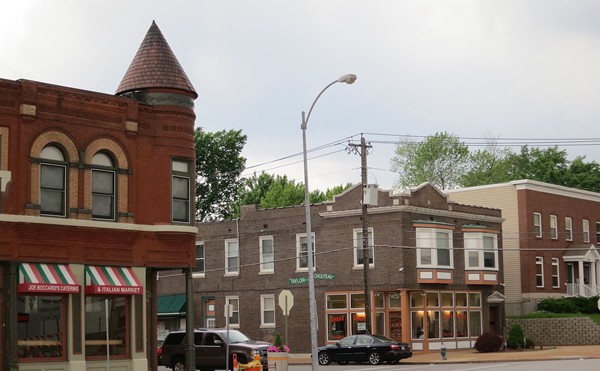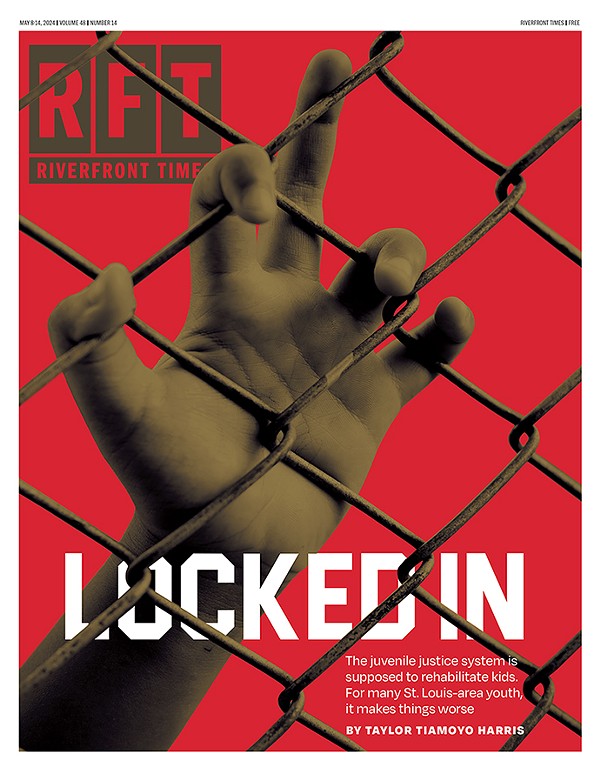Part one in a two-part series.
At midday on March 11, 1982, two brothers steered their truck off Route 32 about eight miles southwest of Salem in the Missouri Ozarks to go feed their cows. Gerald and James Nickles trundled through some woods and parked at a gate. They stepped into a clearing around the one-room Bethlehem School.
The building stood vacant, unused for decades. Its yard was littered with Busch cans — a common nuisance, since local teens favored this spot for boozing and necking.
While tidying up, though, the brothers glanced at the yard’s edge. A pair of white panties dangled in the brush just over the barbed wire fence.
“I smelt the perfume off the clothes,” James would later testify.
They approached and saw more items: Levi’s jeans, a sock and brushed-suede shoes — one missing a shoelace. Proceeding to the rear of the school, they noticed twin drag marks in the dirt. The brothers followed the marks to a waistdeep outhouse foundation about 50 yards away. Now they were vexed. They suspected someone had ground-butchered one of their calves and dumped the carcass.
The pit was heaped with logs and leaves. Peering in, they spied a human leg.
James rushed to a nearby home and phoned the Dent County Sheriff’s Department. The dispatcher there radioed Missouri State Highway Patrol Trooper Gary Dunlap, who arrived around 1:40 p.m.
When Dunlap climbed out of his patrol car, James pointed at the hole. The trooper walked over to it. He moved some debris and discerned a female body. Kneeling, he pressed his fingers to her neck for a pulse. It was chilled and stiff.
She was a brunette, five foot three, 115 pounds. She lay nude, save a bra and velour top hitched up to her armpits. She had been strangled with her own shoelace, then blasted in the neck with a shotgun.
At that time, 14,500 people lived in Dent County, a rolling plateau of pasture, oak and cedar. St. Louisans knew it as float-trip country, two hours southwest by car, a place where you could canoe along the bluffs of the Current River. The area was still absorbing years of flux: Many folks had left the fields to toil in the factories and shops of Salem, the only town, while a few thousand newcomers had moved in. The old clans still knew each other, but on that afternoon, a dozen men converged on the scene — troopers, the sheriff, the coroner — and no one recognized the girl.
“She’s laying there crumpled up in a dirty hole with us standing over it,” Dunlap recalls. “It didn’t seem real.”
The trooper left the crime scene by heading east on 32 back toward Salem, then abruptly pulled over. His colleagues had halted at an iron bridge. Acting on a hunch, one of them searched the dry creek bed below and picked up a leather purse. The driver’s license photo inside matched the victim. It was 21-year-old Judy Spencer.
The Spencers were a well-respected family with a plot of land south of Montauk State Park, down in the valley carved out by the Ashley Creek. Kenneth Spencer, Judy’s dad, raised beef cattle and co-owned a lumber mill there. Kenneth and his wife Mildred were founding members of the Montauk Baptist Church. They were strict parents who led their children to services thrice weekly.
Judy was the baby daughter — the fourth of the five Spencer kids. A feisty extrovert, she had made cheerleader at Houston High School in adjacent Texas County. She loved to go sledding with her nieces and nephews, to water-ski on Table Rock Lake and to sail her Oldsmobile down the back roads at night, windows down, singing along to eight-track tapes of the Eagles and REO Speedwagon.
Fresh out of business college, she had returned home to work the switchboard at Salem Memorial Hospital. She rented a house on the east side of town and trimmed the long caramel hair of her youth to a short bob. She was a young woman, striking out on her own. Then this.
“The entire county still is in shock this week over the horrible murder of the Spencer girl,” the Salem News opined. “This heinous crime has caused considerable fear.”
Senior circuit judge and former Dent County Prosecutor J. Max Price recalls the impact as “tremendous,” adding, “You couldn’t go into a restaurant without hearing about it.”
What stunned locals wasn’t just how the young woman died; it was who she was. In dozens of interviews with Riverfront Times, they utter the same phrase again and again: Crimes like this just didn’t happen here. Not to families like the Spencers.
And the Spencers proved extraordinarily driven to get justice for Judy. For 27 years they prodded law enforcement to solve the case, with no results.
Finally, in 2008, the state tested Judy’s old fingernail clippings and detected a trace amount of DNA belonging to Donald “Doc” Nash, her boyfriend at the time of her death. The Spencers had long eyed Nash with suspicion. When a jury convicted him of the murder in 2009, they felt their prayers and persistence had paid off, at last.
But not everyone is convinced. Three attorneys at Bryan Cave, a prominent St. Louis-based law firm, believe Nash, now 73, is innocent. They are so sure, they’ve agreed to represent him pro bono. When they last took on such a case, they won, and the exoneration sparked national headlines and a multi-million- dollar settlement.
Yet this one is different. DNA discovered decades late often remedies a wrongful conviction, but here the Bryan Cave team argues that it caused one. They believe that the jury misinterpreted the fingernail DNA — a largely unexplored corner of forensic science — and never got to hear about other likely suspects.
The campaign to free Nash is only the latest twist in a case that has altered dozens of lives, in several states, for 33 years and counting.
“A lot of cases, I never hear about again,” says former highway patrol sergeant Henry “Jamie” Folsom, one of the investigators. “This case never goes away. It just keeps resurfacing.”






